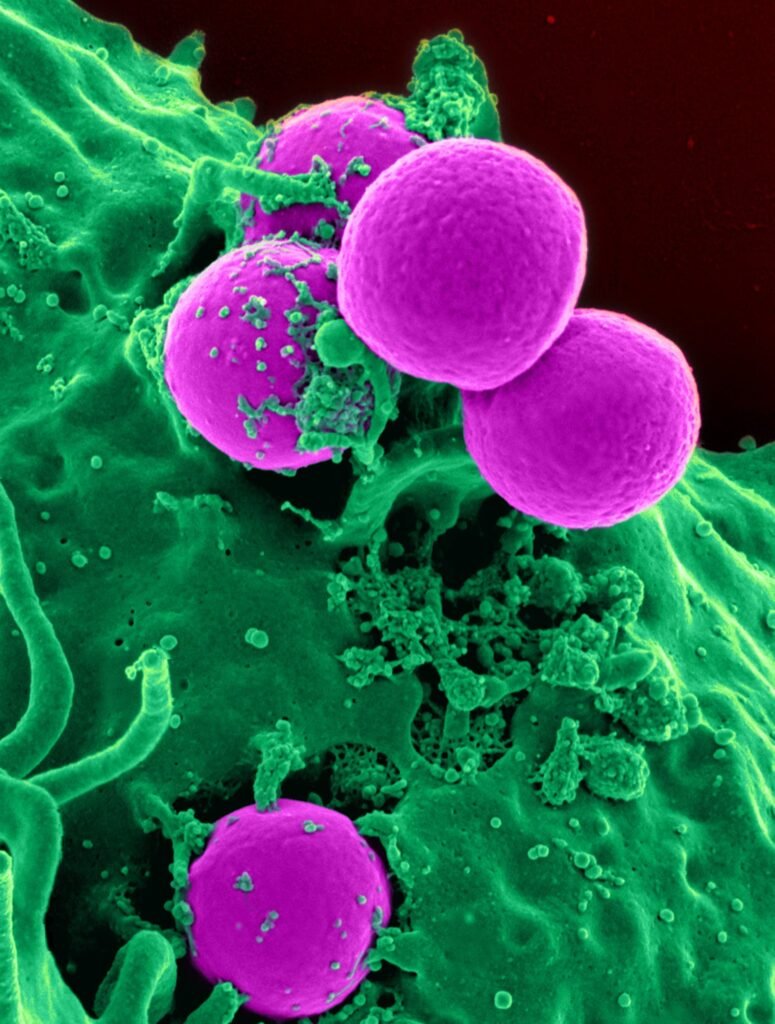Tarantulas, those eight-legged creatures that often invoke fear and fascination, can also fall victim to fungal diseases and infections. Yes, even these seemingly invincible arachnids are not immune. Just like any other living organism, tarantulas can suffer from infections caused by various types of fungi. While they may not catch the eye quite like their larger counterparts in the animal kingdom, these tiny invaders can have a significant impact on tarantulas’ health and well-being. In this article, we will explore the world of fungal diseases and infections in tarantulas, shedding light on the potential risks and how they can be treated. So grab your magnifying glass and join us as we unravel this intriguing arachnid mystery.

Overview
Introduction to tarantulas
Tarantulas are fascinating creatures that belong to the arachnid family. They are known for their large size, hairy bodies, and eight legs. Tarantulas are often kept as pets due to their unique appearance and relatively low maintenance requirements. However, these creatures, like any living organism, are susceptible to various diseases and infections. One such group of ailments that can affect tarantulas are fungal diseases and infections.
The threat of fungal diseases and infections in tarantulas
Fungal diseases and infections pose a significant threat to the health and well-being of tarantulas. These ailments can cause a range of symptoms and complications, and if left untreated, can even be fatal. As a responsible tarantula owner, it is crucial to familiarize yourself with the types of fungal diseases and infections that can affect these creatures, their symptoms, risk factors, and prevention and treatment methods.
Types of Fungal Diseases and Infections in Tarantulas
Fungal infections in the tarantula’s exoskeleton
One common type of fungal infection in tarantulas affects their exoskeleton. The exoskeleton, which serves as a protective outer layer, can become a favorable environment for fungal growth if the tarantula’s enclosure is not adequately maintained. Fungal infections in the exoskeleton can lead to discoloration, softening, or even complete degradation of the outer shell, compromising the tarantula’s overall health.
Respiratory fungal infections
Respiratory fungal infections are another type of ailment that can affect tarantulas. These infections primarily target the tarantula’s respiratory system, making it difficult for them to breathe properly. Symptoms of respiratory fungal infections may include labored breathing, wheezing, and coughing. If left untreated, these infections can severely impact the tarantula’s ability to survive.
Digestive fungal infections
Tarantulas can also suffer from digestive fungal infections, which affect their gastrointestinal system. These infections can impair the tarantula’s ability to digest food properly, leading to a loss of appetite and malnutrition. Common symptoms of digestive fungal infections include regurgitation, abdominal pain, and unusual bowel movements.
Reproductive fungal infections
Reproductive fungal infections can affect both male and female tarantulas. In males, these infections can impact the functionality of their reproductive organs, making it difficult for them to successfully mate. In females, reproductive fungal infections can lead to complications during egg-laying, resulting in reduced fertility or even death.

Common Symptoms of Fungal Diseases and Infections
Visible fungal growth on the tarantula’s body
One of the most evident signs of a fungal disease or infection in a tarantula is the presence of visible fungal growth on the body. This can appear as patches of white, green, or black discoloration on the tarantula’s exoskeleton. It is important to note that not all discolorations are indicative of a fungal infection, as some tarantulas naturally have variations in their exoskeleton coloration. Therefore, it is essential to look for other accompanying symptoms before concluding the presence of a fungal ailment.
Loss of appetite
Tarantulas affected by fungal diseases and infections often exhibit a loss of appetite. They may refuse to eat or show disinterest in their feeding routine. This reduced appetite can lead to malnutrition, weaken their immune system, and hinder their ability to fight off the infection.
Abnormal behavior and lethargy
Another common symptom of fungal diseases and infections in tarantulas is abnormal behavior and lethargy. Affected tarantulas may become inactive, spend extended periods hiding, or show general signs of listlessness. This change in behavior is often a result of their weakened condition due to the ailment.
Difficulty breathing
Respiratory fungal infections can cause tarantulas to experience difficulty in breathing. They may exhibit labored breathing, be unable to take deep breaths, or produce wheezing sounds. If you observe these symptoms in your tarantula, it is vital to seek prompt veterinary attention to prevent further respiratory distress.
Reduced web-building activity
Web-building is an essential activity for tarantulas, as it serves various purposes, including prey capture, shelter, and reproduction. When affected by fungal diseases and infections, tarantulas may exhibit reduced web-building activity. They may abandon their webs or build them less frequently and to a lesser extent. This decrease in web-building can be attributed to their weakened physical state and lack of energy.
Risk Factors and Causes
Poor husbandry and inadequate enclosure conditions
The primary risk factor for fungal diseases and infections in tarantulas is poor husbandry and inadequate enclosure conditions. Tarantulas require specific environmental parameters, such as temperature, humidity, and substrate quality, to thrive. Failure to provide these conditions and neglecting regular enclosure cleaning can create an environment suitable for fungal growth and increase the risk of infection.
High humidity and damp substrate
High humidity levels and a damp substrate are conducive to the development of fungal infections in tarantulas. Excess moisture can promote fungal growth, particularly in the tarantula’s exoskeleton and respiratory system. It is crucial to monitor and maintain appropriate humidity levels within the enclosure to minimize the risk of fungal diseases and infections.
Improper handling and contaminated tools
Improper handling of tarantulas and the use of contaminated tools can introduce fungal pathogens to the tarantula’s body. It is important to practice proper hygiene when handling your tarantula and ensure that any tools or equipment used are sterilized to prevent the transfer of harmful fungi.
Introduction of infected individuals to a collection
If you have multiple tarantulas in your collection, introducing an infected individual can put all the other tarantulas at risk. Fungal diseases and infections can spread through direct contact or through the air if spores are released. Quarantining new tarantulas and thoroughly checking their health before introducing them to your collection is crucial to prevent the transmission of fungal ailments.

Prevention of Fungal Diseases and Infections
Maintaining clean and appropriate enclosures
The first and most crucial step in preventing fungal diseases and infections in tarantulas is maintaining clean and appropriate enclosures. This involves regularly cleaning the enclosure, removing any waste or uneaten food, and providing fresh, uncontaminated substrate. Good enclosure hygiene helps create an environment that is inhospitable to fungal growth.
Proper humidity and ventilation
Maintaining proper humidity levels and ventilation within the tarantula’s enclosure is essential for preventing fungal diseases and infections. Regularly monitor the humidity levels and ensure it falls within the appropriate range for your tarantula species. Additionally, ensuring proper airflow and ventilation can help minimize excess moisture that promotes fungal growth.
Quarantining new tarantulas
Before introducing a new tarantula to your collection, it is crucial to quarantine them first. Quarantining helps identify any potential infections or diseases the new tarantula may be carrying, including fungal ailments. Keeping the new tarantula separate from your existing collection for a significant period allows you to closely monitor their health and prevent the spread of any potential infections.
Using sterilized tools and practicing good hygiene
Proper hygiene and the use of sterilized tools are essential in preventing the transmission of fungal diseases and infections in tarantulas. When handling your tarantula, ensure your hands are clean, and if necessary, use gloves to prevent any potential contamination. Sterilize any tools or equipment used in your tarantula’s enclosure, such as feeding tongs or water bowls, to eliminate the risk of introducing harmful fungi.
Avoiding stress and providing a balanced diet
Stress can weaken a tarantula’s immune system, making them more susceptible to fungal diseases and infections. It is essential to provide your tarantula with a stress-free environment by avoiding sudden disturbances, loud noises, or extreme temperature fluctuations. Additionally, ensuring a balanced diet with appropriate nutrients can help bolster their immune system and improve their overall health, reducing the risk of infections.
Diagnosing Fungal Diseases and Infections
Visual examination and symptoms analysis
Visual examination plays a crucial role in diagnosing fungal diseases and infections in tarantulas. A close observation of the tarantula’s body for visible fungal growths, changes in exoskeleton coloration, or other abnormalities can provide important clues about the presence of an infection. Additionally, analyzing the tarantula’s behavior, appetite, and any respiratory distress can aid in the diagnostic process.
Laboratory testing
In some cases, laboratory testing may be necessary to confirm the presence of a fungal infection in a tarantula. Microscopic examination of skin scrapings or samples from affected areas can help identify the specific fungal species and guide treatment decisions. Laboratory testing can provide valuable information about the severity of the infection and any potential complications.
Veterinary consultation
Consulting a veterinarian experienced in exotic pets and specifically tarantulas is highly recommended when diagnosing and treating fungal diseases and infections. Veterinarians with expertise in arachnid health can provide a professional assessment, recommend appropriate diagnostic tests, and guide you through the treatment process. Seeking veterinary advice ensures the best possible care for your tarantula.

Treatment Options
Antifungal medications
Once diagnosed with a fungal disease or infection, tarantulas can be treated with antifungal medications. These medications may come in the form of oral medication, topical creams, or injections, depending on the severity and type of infection. It is crucial to follow the veterinarian’s instructions regarding dosage and duration of treatment to ensure the best possible outcome.
Appropriate enclosure modifications
In addition to medication, appropriate enclosure modifications may be necessary to support the tarantula’s recovery. Adjustments such as optimizing humidity levels, improving ventilation, and providing a clean and comfortable environment can aid in the healing process. The veterinarian may also recommend specific substrate types or enclosure layouts to prevent further fungal growth and reinfection.
Supportive care and stress reduction
Supportive care, including proper nutrition and stress reduction techniques, plays a vital role in the treatment of fungal diseases and infections in tarantulas. Ensuring your tarantula receives a balanced diet with essential nutrients can boost their immune system and aid in fighting off the infection. Providing a stress-free environment by minimizing disturbances and maintaining appropriate temperature conditions can also promote healing and recovery.
Potential Complications and Repercussions
Secondary bacterial infections
If left untreated, fungal diseases and infections in tarantulas can lead to secondary bacterial infections. The weakened immune system caused by the fungal ailment can create an opportunity for opportunistic bacteria to invade the tarantula’s body. These secondary infections can further complicate the tarantula’s health and require additional treatment.
Organ damage and systemic inflammation
Severe and prolonged fungal infections can cause organ damage and systemic inflammation in tarantulas. If the fungal infection spreads to internal organs or affects vital body systems, it can lead to irreversible damage and compromise the tarantula’s overall health.
Chronic health issues and reduced lifespan
Chronic fungal diseases and infections can have long-lasting effects on a tarantula’s health and lifespan. Recurrent or untreated infections can lead to chronic health issues, weakening the tarantula’s immune system and making them more susceptible to future infections. In severe cases, fungal ailments can even shorten the tarantula’s lifespan.

Conclusion
Importance of proactive prevention and early intervention
Fungal diseases and infections pose a significant threat to the health and well-being of tarantulas. Proactive prevention measures, such as maintaining clean enclosures, providing appropriate humidity levels, practicing good hygiene, and avoiding stress, are key to minimizing the risk of these ailments. Early intervention is crucial in diagnosing and treating fungal infections, as prompt treatment can greatly improve the chances of recovery.
Encouragement to seek professional advice
If you suspect your tarantula may be affected by a fungal disease or infection, it is important to seek professional advice from a veterinarian specialized in exotic pets. They can provide an accurate diagnosis, recommend appropriate treatment options, and offer guidance to ensure the best possible care for your tarantula.
Responsible pet ownership for tarantula health
Taking care of a tarantula involves more than just providing food and water. Responsible pet ownership also means ensuring their health and well-being by maintaining suitable enclosure conditions, practicing good hygiene, and seeking necessary veterinary care. By embracing these responsibilities, you can help your tarantula live a healthy and fulfilling life.
